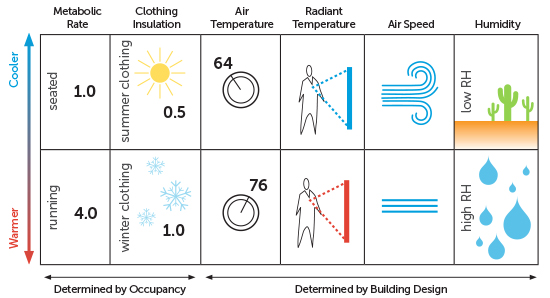Attending next month’s ArchitectureBoston Expo (ABX)? Mark your calendar for our discussion of Cut Your Losses: Envelope Performance and Thermal Comfort on Wednesday, 10/29.

In the U.S., thermal comfort is primarily controlled by mechanical means, allowing these systems to compensate for shortcomings in envelope performance. With rising energy costs and increased focus on creating healthy environments, this model is due for reconsideration. Thermal comfort for building occupants around glazed openings is an important design consideration, as the amount of glazing and the performance criteria (U-factor) can drive the need for perimeter heating. We calculated the effect of different glazing configurations on mean radiant temperature, and through occupancy surveys determined real-world clothing insulation values. Using this data, we were able to set a thermal comfort threshold and establish the makeup of comfortable spaces without the need for perimeter heating at various exterior temperatures. Information on downdrafts that can occur through convection along tall, cold surfaces was overlaid for a more complete picture. Additionally, to address thermal bridging, we used an infrared camera to analyze the thermal performance of fifteen built projects to establish real-world data about interior surface temperature. This session will link information gathered from post-occupancy studies, field measurements and modeling to understand how the radiant temperature of walls inside a space can be predicted and used to ensure comfortable environments.
Details
Wednesday, October 29, 2014
1:00 PM — 2:30 PM
Speakers
Andrea Love AIA, LEED AP, Director of Building Science
Lynn Petermann, AIA, Architect



